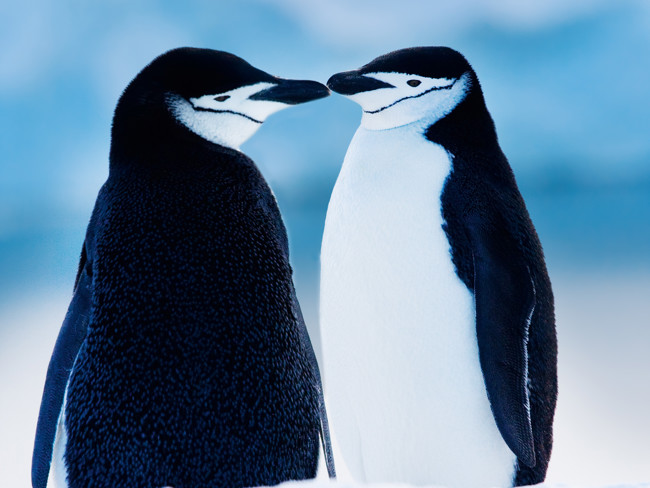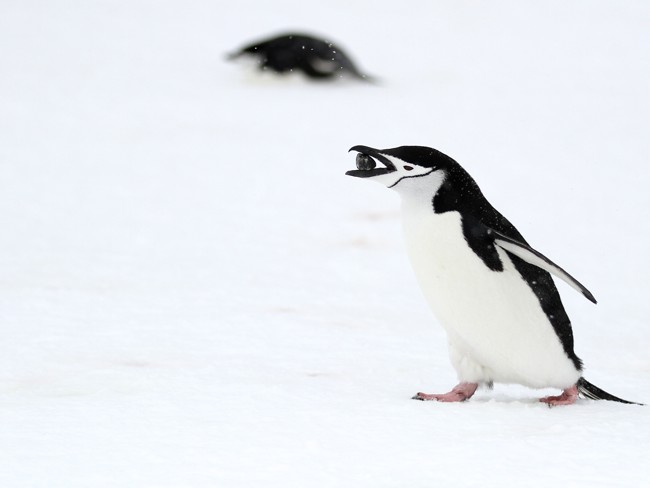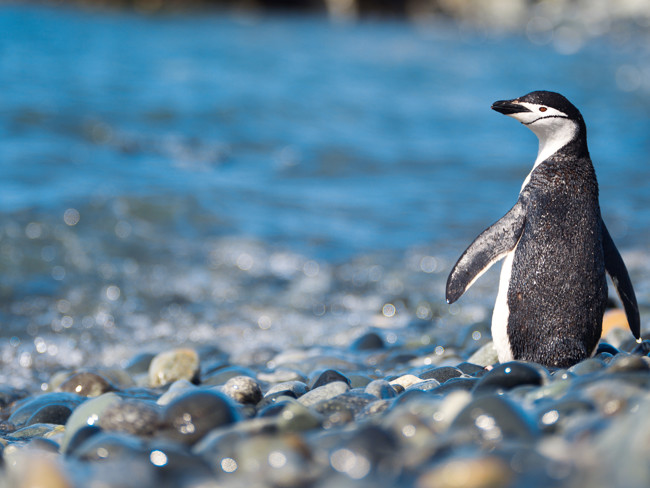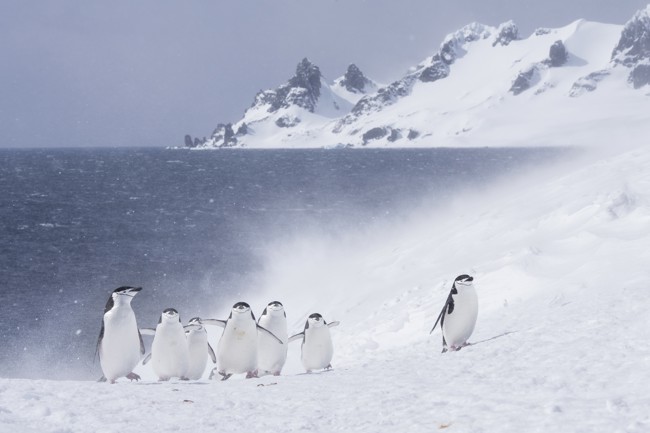With a scream powerful enough to crack stone and its characteristic helmet-like head marking, the chinstrap penguin is truly a remarkable sight. As they breed on rocky slopes along the Antarctic Peninsula and on islands in the South Atlantic, you'll have the chance to hear the deafening calls of these massive colonies during our Antarctic expedition – The Great Penguin Adventure. Here are some fascinating facts about the world’s second most common penguin.
Looks like it's wearing a helmet
The chinstrap penguin has a distinctive appearance due to the black line that runs under its chin, resembling a chinstrap. This strap-like marking, combined with its black head, gives the impression that the penguin is wearing a helmet.
Size
Measuring about 70 centimeters in height and weighing around 4.5 kilograms, the chinstrap penguin is considered a medium-sized penguin. And although it can't fly, it can scale steep, icy cliffs by hopping and climbing in a surprisingly agile way.


Very large colonies
Chinstrap penguins are most commonly found in Antarctica and on the sub-Antarctic islands. Their colonies are incredibly large—sometimes numbering in the hundreds of thousands at a single location. The largest known colony is on the uninhabited Zavodovski Island in the South Sandwich Islands, home to over 1.5 million breeding pairs, making it the largest penguin colony in the world.
Stone thieves
Chinstrap penguins usually nest along rocky coastlines, where they build their nests out of stones. Occasionally, males steal stones from neighboring nests to avoid having to fetch their own, which can lead to heated penguin disputes.
Forming strong bonds
Chinstrap penguins form strong bonds with their partners. They return to the same nesting site and mate each year with the same partner. In their stone-built nest, the pair take turns incubating their two eggs and feed the chicks in alternating shifts every few days.
Screams that could shatter stone
The noise level in chinstrap penguin colonies is intense, as the birds are extremely vocal. They use their calls to recognize their partners and chicks among the thousands of other penguins. They are sometimes nicknamed "stone-cracking penguins" because their calls are so loud and piercing that they are said to be capable of cracking stone.


A nocturnal swimmer
Chinstrap penguins are excellent swimmers and can reach speeds of up to 30 km/h in the water. Their diet consists mostly of krill, and they can dive as deep as 70 meters, but they usually catch their food during shorter dives of around 30 seconds at depths of about 10 meters. A distinctive feature of the chinstrap penguin is that it prefers to dive at night.
Second most numerous in the world
After the macaroni penguin, the chinstrap penguin is the second most common penguin species in the world, with a population of around 8 million breeding pairs. They can live between 15 and 20 years.



